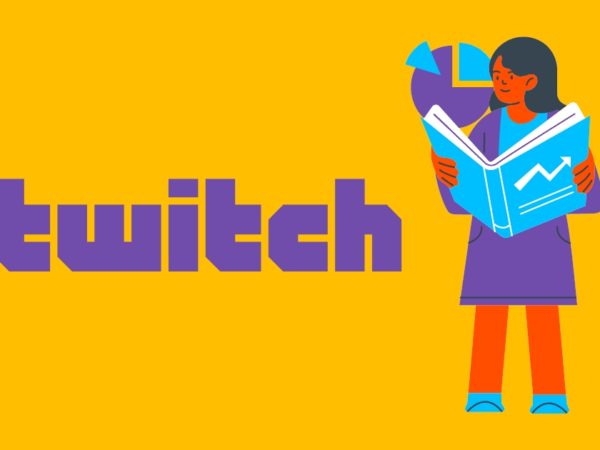The currency of social media is attention. With social listening, you find out what’s important to your customers so that you can deliver a better experience through your marketing channels and offerings.
Social listening gives you insight into how your customers think about you and your competition.
In this guide, you’ll learn how to leverage social listening to monitor mentions of your brand, product, and competitors on social media channels.
Social media lets people talk and express their feelings, including their sentiments about the brands they like or hate. There are millions of consumers on social media.
Brands that engage with their customers make them feel heard and appreciated. Furthermore, conversations on social media serve as market research for companies.
With billions of active users all over social media, it’s the perfect place to gather intel on what your audience likes and dislikes.
All you have to do is know where to find your audience and what to look for.
Social listening is a way to monitor social media channels for mentions of your industry, brand, competitors, and related keywords.
It’s a critical element of market research and allows your business to track customer feedback, and lets you gain insights into various trends and opportunities in the marketplace.
Through mentions of your brand, you’ll know how customers feel about your products or services, what they’d like to see from you moving forward, and what their pain points are. This allows you to update processes and tweak your products to serve your customers better.
Social listening isn’t just about monitoring the mentions of your brand. It’s also used for tracking trends within the industry, tracking competing brands, and sentiment analysis on various topics related to your business.
This intelligence can be utilized for everything from product strategy and marketing to customer support and making smarter decisions that improve your company’s bottom line.
About 46% of consumers believe that the best brands engage with their audience on social media.
Without social media listening, you’ll be operating with blinders on, as you won’t be able to understand your audience better. As mentioned, social listening gives valuable feedback to improve your offering and help make your customers happy.
For example, Spotify has a dedicated Twitter account where they actively listen and respond to their users who may have concerns or questions.
The account is also dedicated to providing tips, tricks, and updates to their followers. This keeps their customers informed and helps them to use their product better.
Furthermore, social listening is a gold mine for uncovering product or business intelligence. Customers who feel comfortable engaging with a brand will likely offer their two cents on what they want to see.
For example, a Zappos customer mentioned an issue with using Afterpay on Twitter. Zappos quickly responded, resolved the issue, and was able to fix a bug in their system.
If you’re new to social listening, it’s easy to be confused by all the marketing jargon. Social listening and social monitoring are typically used interchangeably; however, there’s a distinct difference.
Social listening is a marketing channel to understand your audience so that you can improve campaign strategy and customer experience.
Social monitoring revolves around real-time tracking and guiding discussions surrounding your brand on social media. This means responding to messages and addressing any concerns.
Social listening is more about analyzing the trends and patterns within your brand and industry so that you can improve marketing decisions. A social listening strategy takes a holistic approach to gather valuable insights for strategic business improvements.
Conversely, social monitoring is more reactionary, which usually involves responding to complaints or addressing any issues that might arise concerning the brand’s reputation.
Social listening aims to monitor relevant conversions to understand the underlying sentiment and respond with an effective marketing strategy that influences your audience favorably.
Social listening is a three-step process:
Step 1: Monitoring
The first step is to monitor your social media and marketing channels for mentions of your brand, related topics, keywords, products, and competitors in social conversations. You can either do this manually or use a tool to automate this process.
Step 2: Analysis
Next, you’ll gather the information during the monitoring phase and begin to sort out the data. Separate the information into what customers like and don’t like about your offerings and look for any trends or patterns.
There are even customer sentiment analysis tools that can provide insight into the underlying emotions behind what customers say.
Step 3: Response
As a company, you must decide how to respond based on the sentiment and feedback you’ve gathered. Perhaps, you want to reposition your brand messaging to better appeal to your target market. Or, you might change your marketing strategy or product offerings to give customers a better experience.
Social listening is an art form. It requires a tactical strategy to know where to look and what information you’re looking for. Here are best practices to help you effectively perform social listening for your brand:
#1. Analyze the Right Channels
You first have to know where to look. There’s no point putting your efforts to a dead end. Find a channel that fits your buyer personas. If you’re a B2B company, it makes sense to gather data from LinkedIn.
Social listening tools help you track behavior automatically without manually scraping up old history. Typically, they’ll notify you immediately every time your brand is mentioned.
#3. Pay Close Attention to What Your Customers Say
Don’t just gloss over your customer’s comments. Take the time to understand what their most common issues are, and also figure out what your best customers love about you.
Identify your most loyal social media customers and begin to create an avatar for the type of customers you want to attract, which will help improve your marketing campaigns.
#4. Look for Industry Insights
Keep an eye out for potential disruptions to your space, such as legislation, new competitors, or technology. For example, the AI industry is making more jobs obsolete, meaning you must plan or find more skilled workers.
#5. Understand Your Competitor’s Shortcomings
Social listening is one way to perform competitor analysis. You can find gaps in the marketplace that allow you to fill a need better than your competitors can.
Perhaps you can provide your offerings faster, cheaper, or better than your competitor. Even if they’re a big competitor, you can provide more personalized service.
Social listening should be used as an ongoing procedure to help you evaluate and access your existing public perception and get a feel for the marketplace.
The most common reasons to use social listening are:
- Identify unhappy customers and address their issues. This is an opportunity to win them back and create a memorable experience.
- Look at influencers in your industry and collaborate. If you notice influencers mentioning or even using your product or service, collaborating with them is mutually beneficial.
- Create a new offering or make your product better. Customers will often complain about a lack of features or functionality. Use the feedback to make your product better.
Here’s an example to explain things better:
Chipotle used social listening to find content creators on TikTok for user-generated content. They challenged The Cheeky Boys to send a burrito into space, and they tried it! This allows Chipotle to work with influencers and gain greater brand exposure.
Using social media listening tools to help you collect more information efficiently and automate the process can allow you to run your social listening strategy effectively. Here are the best social media listening platforms to use:
Sprout Social offers a listening tool that integrates seamlessly into your marketing strategy. It collects brand and competitive insights where you can track all conversations around relevant topics. You’ll see a list segmented by positive and negative comments.
Here are some of the most popular features on Sprout Social:
- Audience Analysis: Examine your audience’s preference to bolster your marketing strategy
- Customer Feedback: Track conversations to determine consumer attitudes
- Consumer Research: Spotlight important audience demographics to understand better and reach your customers
- Competitor Comparison: Find industry gaps, and understand the sentiment towards competitors to identify business opportunities
The platform has a 30-days free trial, after which you will have to pay for one of the four plans it offers.
#2. Buffer
Buffer is a platform that helps measure and report key findings from the marketplace. You can measure and analyze your social media performance to understand what people say.
This tool gives you audience insights, so you can see the specific demographic that your brand is appealing to.
From there, you receive fully customized reports that summarize the data so that you can share them with your team, stakeholders, or executive leaders.
Buffer also provides recommendations on how to optimize your content so that you can get the most out of your marketing strategy.
#3. BuzzSumo
<img alt="YouTube video" data-pin-nopin="true" data-src="https://kirelos.com/wp-content/uploads/2023/01/echo/hqdefault.jpg63c11bb3839ef.jpg" height="360" src="data:image/svg xml,” width=”480″>
BuzzSumo is one of the most popular social listening tools on the market.
Using the keywords feature of the tool, you can stay alert on the relevant topics, keywords, and brands that impact your business.
However, unlike most tools, BuzzSumo doesn’t only pertain to social media. You can track journalists, publishers, influencers, and bloggers, so you can see what others are writing about.
For example, engaging with a journalist on a hot topic within the industry may garner more brand awareness for your company.
#4. Keyhole
Keyhole is a social listening platform and reporting tool to help grow your brand’s impact and gain key consumer insights.
Reputable companies like L’oreal, McGraw Hill Education, Rip Curl, Billboard, USTA, and much more use Keyhole for their social listening strategy.
This tool tracks all the brands mentioned so that you can respond in real-time. It also has a competitor analysis feature where it aggregates data across the industry, so you can quickly compare your competition.
For example, you may notice that your competitors post more often than you. With the data, you can optimize your social media to get an edge in the market.
Like any other marketing skill, social listening requires the right know-how and practice to become an expert.
Below are books and courses that teach you the art of social listening so that you can apply it to your business.
#1. Social Media Listening and Co-Creation
The authors Stephanies Leishman and Barbara Bickart offer the perfect balance between the conception ideas of this marketing principle while also giving practical tips for implementation.
In this book, you’ll learn everything you need to know about social listening, such as:
- The advantages and disadvantages of social listening compared to other types of market research strategies
- How to identify consumer sentiment
- How to facilitate innovation from social listening
- The three levels of social listening
#2. Social Listening and Analytics
The Social Listening and Analytics book dives more into the process of creating an effective social listening strategy. As the author, Gerardus Blokdyk, mentions, asking the right questions is the first step to social listening.
This sparks innovation, allowing you to draw actionable insights from your data.
This book gives you practical implementation as well, such as an in-depth Social Listening and Analytics Assessment. You’ll get case-based questions and seven core levels of social listening to identify how to get the most out of your market research.
The Social Media Listening and Measurement Masterclass is a great all-encompassing training series to learn everything you know about implementing this strategy.
Here are some of the most prominent aspects of the masterclass:
- What is social media listening, and what are its benefits?
- How to use technology to incorporate social media listening?
- How to use boolean operators to find keywords, topics, and brand mentions?
- How to perform a social media sentiment analysis?
- How to create insightful reports using Power BI, pivot tables, Google Data Studio, and others?
- Real-life examples of brands that can leverage social media listening to achieve their PR objectives.
Wrapping Up
In a nutshell, social listening is monitoring social media for topics, conversations, keywords, and competitors relevant to your brand.
You can use that knowledge to improve your marketing campaign, shift your company direction, improve your content, or bolster your customer support.
The social listening strategy isn’t about tracking likes and engagement stats. Instead, it measures public perception and human sentiment toward your brand.
By following our guide, you’ll know how to perform social listening and the tools to help you effectively gather valuable insights. Once you’ve mastered social listening, you’ll be able to make your customers happy and influence how your audience perceives your brand.
You may also explore some best social listening tools for growing business.



